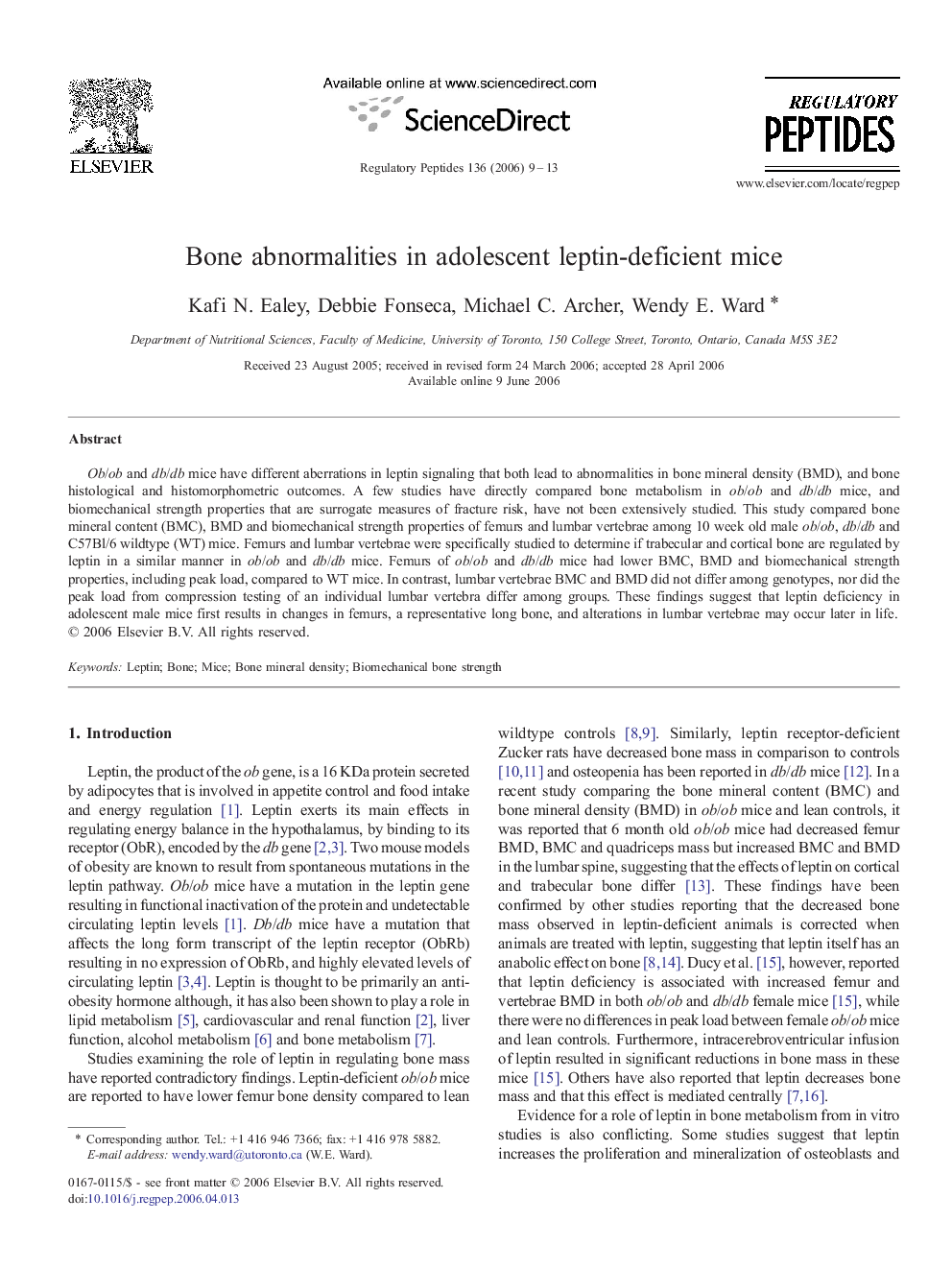| Article ID | Journal | Published Year | Pages | File Type |
|---|---|---|---|---|
| 2023477 | Regulatory Peptides | 2006 | 5 Pages |
Ob/ob and db/db mice have different aberrations in leptin signaling that both lead to abnormalities in bone mineral density (BMD), and bone histological and histomorphometric outcomes. A few studies have directly compared bone metabolism in ob/ob and db/db mice, and biomechanical strength properties that are surrogate measures of fracture risk, have not been extensively studied. This study compared bone mineral content (BMC), BMD and biomechanical strength properties of femurs and lumbar vertebrae among 10 week old male ob/ob, db/db and C57Bl/6 wildtype (WT) mice. Femurs and lumbar vertebrae were specifically studied to determine if trabecular and cortical bone are regulated by leptin in a similar manner in ob/ob and db/db mice. Femurs of ob/ob and db/db mice had lower BMC, BMD and biomechanical strength properties, including peak load, compared to WT mice. In contrast, lumbar vertebrae BMC and BMD did not differ among genotypes, nor did the peak load from compression testing of an individual lumbar vertebra differ among groups. These findings suggest that leptin deficiency in adolescent male mice first results in changes in femurs, a representative long bone, and alterations in lumbar vertebrae may occur later in life.
